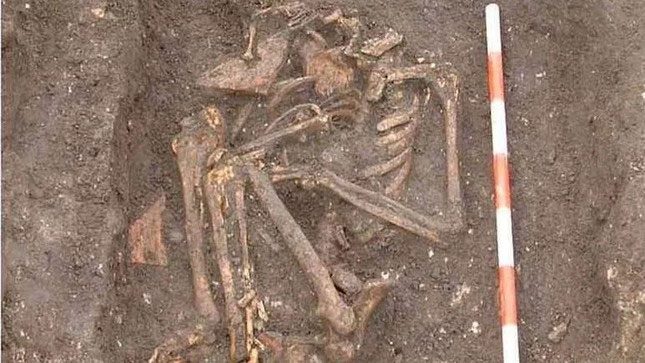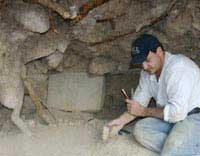Archaeologists have uncovered a surprising truth through the skeleton of a medieval woman buried in an unusual crouched position at a church in England. This woman may have died from syphilis and arthritis.

The skeleton of the medieval woman was discovered during excavations at a church in England.
This skeleton was found in 2007 during an excavation at All Saints Church in York. Archaeologists believe the remains may belong to Lady Isabel German, who lived a reclusive life in a single room within the church during the 15th century, according to a study published on December 16th of last year in the journal Medieval Archaeology.
What struck archaeologists was the manner in which the woman was buried in a crouched position in a small room located behind the altar of the church. The strange position of the body is considered rare for burials during this period.
The lead author of the study, Lauren McIntyre, an archaeologist at Oxford Archaeology Limited in England, stated: “The position of the skeleton indicates that this was a woman of high status in the medieval period.”
The new research suggests that Lady Isabel German’s burial position may have been due to her suffering from arthritis or the confined burial space allocated for her. It is also possible that she died in that position, and that this painful death occurred before she was buried, the authors wrote in the study.
After conducting radiocarbon dating and analyzing the remains, researchers determined that this woman was living with infectious arthritis and late-stage syphilis. This means she endured severe infection symptoms that could be seen affecting her entire body, followed by neurological issues and mental health decline.
The researchers noted that several lesions found in other areas of the skeleton also suggested syphilis.
While the researchers find it challenging to speculate on how this woman contracted the disease while living a reclusive life, they believe it is possible that the illness had been present in her for 28 years.





















































